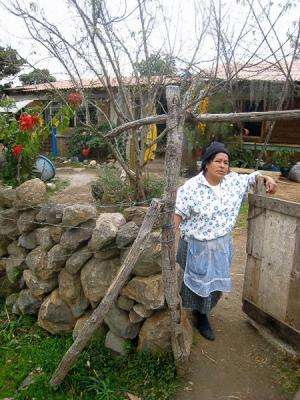Border control leaves undocumented migrants displaced, says historian

During a period when circular migration between Mexico and the United States declined, border militarization led to an increase in illegal immigration, says Stanford scholar Ana Raquel Minian.
The pending 2013 immigration reform bill aims to establish a pathway to citizenship for more than 11 million undocumented immigrants living in the United States. The bill also calls for the completion of 700 miles of border fencing between the United States and Mexico and doubles the number of Border Patrol agents.
Critics of the bill say that heightened border control measures, along with the bill's proposal to reduce the number of available work visas for agriculture, will only lead to an increase in undocumented migration to the United States from Mexico.
Through an exhaustive study of a time when the border was more porous, Stanford historian Ana Raquel Minian illustrates how "unilateral policies that have attempted to limit population flows across the U.S.-Mexico border through militarization have failed in the past" and are "bound to fail in the future."
Minian's research is the first in-depth history of transnational Mexican migration from 1965 to 1986, an era of transition that saw booming circular migration between the United States and Mexico as well as expanding bi-national efforts to regulate the border. The increasingly stringent immigration policies enacted during this period left many Mexicans without the right to fully belong in either nation.
An assistant professor of history at Stanford, Minian hopes her research will bring to light the "historical development of migratory policies and their impact on people's lives."
Her research, she said, also shows why current immigration policies "must take into account the transnational forces behind people's migratory patterns."
"At the outset, Mexican officials discouraged emigration, but by the 1970s, those same officials were encouraging such departures as a solution to high unemployment and population growth," Minian said.
Simultaneously, she noted, "the U.S. government attempted to address these same problems by starting to militarize the border. Thousands of Mexican nationals found themselves without the substantive right to belong to either nation-state."
According to Minian, border militarization "did not reduce migration but instead made it more dangerous." It also forced undocumented migrants in the United States to make their stay permanent.
Tracing the migrant story
During the course of her field research, Minian, who herself migrated to the United States from Mexico City in 2001, visited towns deep within Mexico, often finding moving stories of dislocation and solidarity.
Minian, who is working on a book project titled "Undocumented Lives," conducted more than 200 oral history interviews and delved into government archives, migrant correspondence, privately held organizational records, personal collections of pamphlets and unpublished ephemera. Her thesis won the 2012 Henry Gabriel Prize from the American Studies Association for the best dissertation of the year in the field of American studies.
To trace migrants' stories, Minian went from town to town interviewing people affected by transborder migration. At times, she sought out the stories of particularly important migrant activists. Gregorio Casillas, for example, was a key figure in building migrant organizations that sent money back to build small towns in Mexico.
Casillas was a founder of a "hometown association," and these groups became increasingly common in the period Minian studies. They raised money through parties and other events to send to Mexico, where local agents were in charge of appropriately distributing it.
These were spaces of community and solidarity, raising money to send home, not from "family member to family member," Minian said, but instead from "community in the U.S. to community in Mexico" – what she calls an "extraterritorial welfare state."
According to Minian, some towns have this money to thank for their basic infrastructure and systems.
From within Mexico, Mexicans promoted their visions of belonging through songs, ceremonies for the hijo ausente (absent son) and religious festivals. "At a time when neither nation offered them a secure home, members of migrant communities articulated and practiced national and regional belonging on their own terms," Minian said.
When Mexicans began migrating in higher numbers, Minian found that families became disjointed. During the period she studies, "generally Mexican men migrated and women stayed," and as Minian started looking for stories, thinking she might find narratives of female solidarity and community, she instead found "really bleak pictures of human loss and pain."
Militarized border leads to instability
Framed by the 1965 conclusion of the Bracero Program, which brought temporary contract workers to the United States, and the passage of the Immigration Reform and Control Act (IRCA) in 1986, Minian's research underscores the consequences of government policies on human lives.
IRCA legalized 2.3 million undocumented Mexican workers "so they stopped living in the shadows of society," but, paradoxically, Minian said, it also drastically increased the militarization of the border. This, in turn, led migrants to cross through more dangerous terrains, increasing the number of deaths and injuries.
Undocumented migration, Minian said, kept on increasing, but due to the perils and costs of crossing the border, the nature of this migration became less circular.
"Migrants continued coming to the United States out of economic necessity," but, Minian noted, "fewer of them decided to then head back to Mexico with the hope of returning to the United States at a later date" because the risks of crossing the border were simply too great.
More information: humanexperience.stanford.edu/
Provided by Stanford University


















